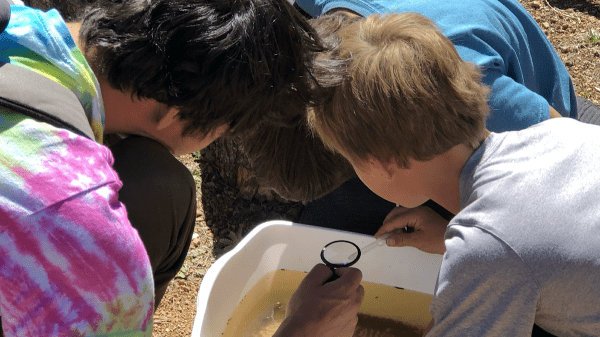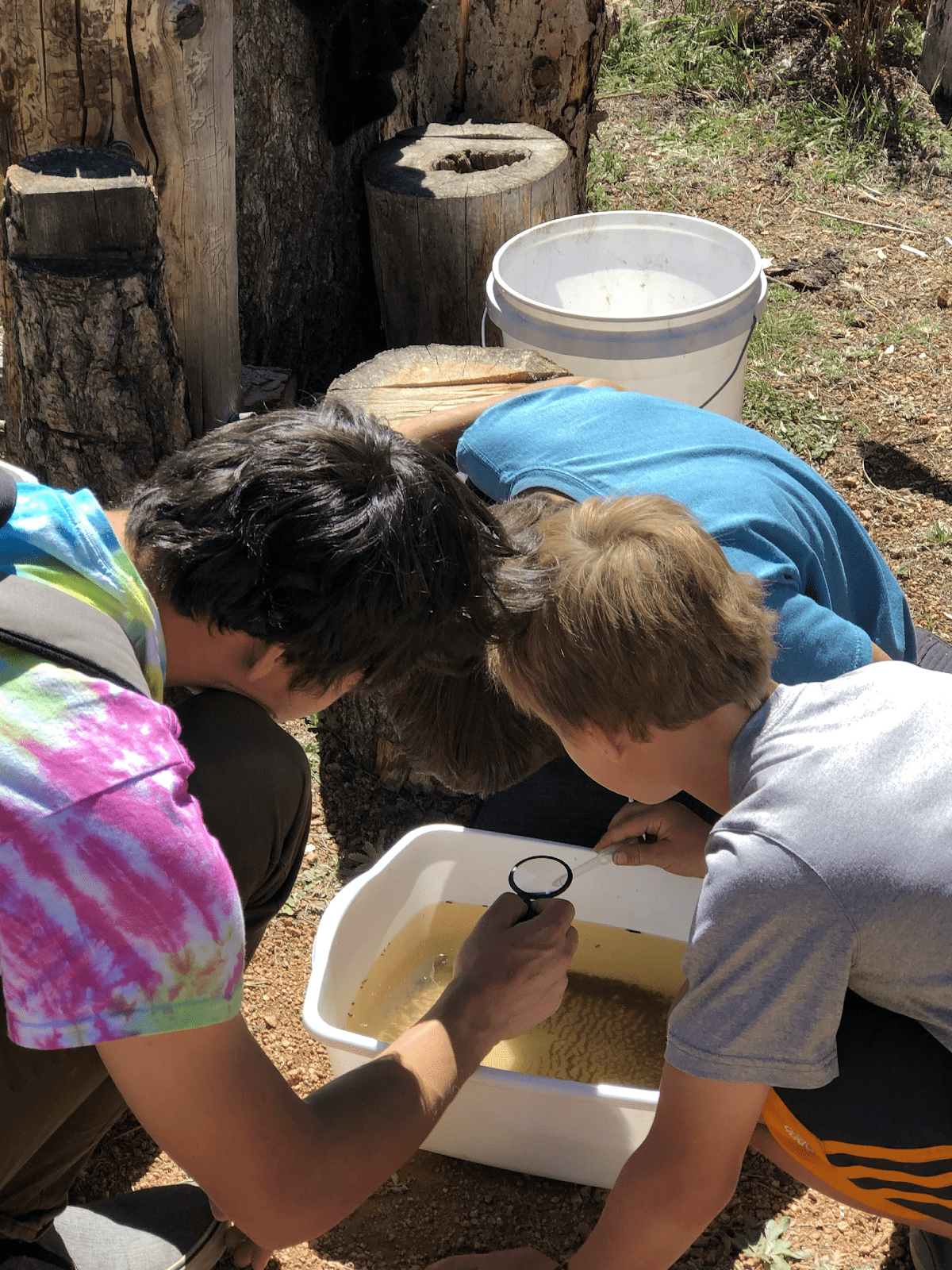The TREE Semester Accreditation Journey

Program Overview
The Teaching and Research in Environmental Education (TREE) Semester is a 16-week, residential program that mirrors the traditional study abroad experience. Undergraduate students live and learn in community at the scenic Catamount Center in the montane forest outside Woodland Park, Colorado. This program is a collaboration between the Colorado College Education Department, The Catamount Center for Environmental Science and Education (a local nonprofit with a 177-acre field campus), and two public schools. Since its inception in 2014, TREE has been an integral part of Colorado College’s place-based identity as a campus in the Rocky Mountain West in a community that, like the University of Minnesota Duluth’s NAAEE accredited MEED program, “value[s] sustainability, environmental education, nature engagement, and outdoor recreation.”
Undergraduate students enrolled in the program learn by simultaneously teaching and researching how K–12 students develop. Where traditional programs provide only limited teaching opportunities, the TREE Semester allows undergraduates to learn about their students' development through almost 100 hours of experiential teaching. Our educational research informs our teaching, and our teaching informs our research in a cycle of virtuous learning.
Our Decision to Seek NAAEE Accreditation
TREE Semester was first accredited by NAAEE in 2017 and re-accredited in 2024. When we started TREE in 2015, we used the Colorado Alliance for Environmental Education’s (CAEE) portfolio certification process, which aligns closely with NAAEE’s Professional Development of Environmental Educators: Guidelines for Excellence. Since our TREE students from 2015–2017 were already submitting successful portfolios to CAEE for state-level certification, adapting our accreditation to NAAEE was relatively easy, especially because CAEE’s master-level portfolio certification is endorsed by NAAEE. This meant anyone certified at the master level in Colorado would be recognized nationally. In our first two years of TREE, 83% of students submitted CAEE portfolios, and 100% were certified. Thus, the TREE Semester offered students individual CAEE certification and training through an NAAEE-accredited college program. We know of no other programs that are accredited and provide certification.
So, why would we use both CAEE portfolio certification and NAAEE accreditation? First, the two approaches offer triangulation. As a member of the state certification committee, I could compare TREE students’ performance with others in the state and know that each certified student portfolio did not just receive my grades (in four classes) but that other master-certified environmental educator reviewers also approved of our students’ abilities and provided feedback for them (and thus, our program).
Second, since the self-study accreditation process and the CAEE portfolios are tied to the same NAAEE Guidelines, the translation of portfolio certification to the program accreditation application was straightforward.
Last, and perhaps most important, the portfolio certification and program accreditation processes provide complementary information to assess and enhance the TREE Semester.
Benefits of Accreditation
Student-Level. Students come to TREE from various undergraduate majors, and most are unfamiliar with NAAEE or CAEE. We introduce students to NAAEE and CAEE through conversations about certification and accreditation. We also include accreditation and certification in our marketing and recruitment materials to communicate the rigor of our program to prospective students.
Program-Level. An essential benefit of NAAEE’s accreditation of our program has been to assess and improve the TREE Semester. We have improved our program based on accreditation evaluator feedback and, perhaps even more importantly, the process of preparing the certification and re-certification applications.
College-Level. As a liberal arts college less focused on career training, Colorado College never requested that TREE be accredited or that our students become certified environmental educators. However, College administrators and members of our Education Department were supportive of the process and proud to have an NAAEE-accredited program. The collected data was also helpful to support a recent external review.
State-Level. It is challenging for students to learn enough in just one semester to become professionally certified at the highest level. In fact, this has raised concerns among some state-level certifiers. Our undergraduate master-level certified portfolios have catalyzed state-level discussions about revamping certification levels and requirements.
National-Level. Perhaps most importantly, the NAAEE accreditation self-study document and the associated documentation of learning outcomes go well beyond any Colorado College requirements for assessment. A detailed look at many outcomes led to a recent publication on how the developmental evaluation of environmental education programs leads to enhanced learning communities (Drossman, 2024), catalyzed partly through outcomes from the certification and accreditation processes.
Summary
When first accredited by NAAEE, TREE was one of just a few accredited undergraduate programs. As more NAAEE-accredited higher education programs joined our ranks, the network of colleagues grew, we became more involved in conversations about the Guidelines and accreditation, and our ability to share resources improved. I found myself in exciting new leadership positions for higher education and rewriting the latest Guidelines.
I believe that having more NAAEE-accredited higher education program colleagues is the best aspect of accreditation. As discussed above, accreditation encourages excellence and in-depth, continual assessment and improvement at all levels, from student to national (and potentially international). To quote my colleague, Julie Ernst, “Accreditation [is] not only good for our program but good for the field of environmental education as a whole!” While the future of the TREE Semester is uncertain after my recent retirement, the foundations we have built through certification and accreditation (and re-accreditation) make it more likely that environmental education will be sustainable beyond my time at Colorado College.

TREE students in action. Photo credit: TREE Semester Staff
Works Cited
Drossman, H. (2024). An iterative adaptive developmental evaluation framework: Case study of the TREE semester learning community. Environmental Education Research, 30(5), 807–830.



